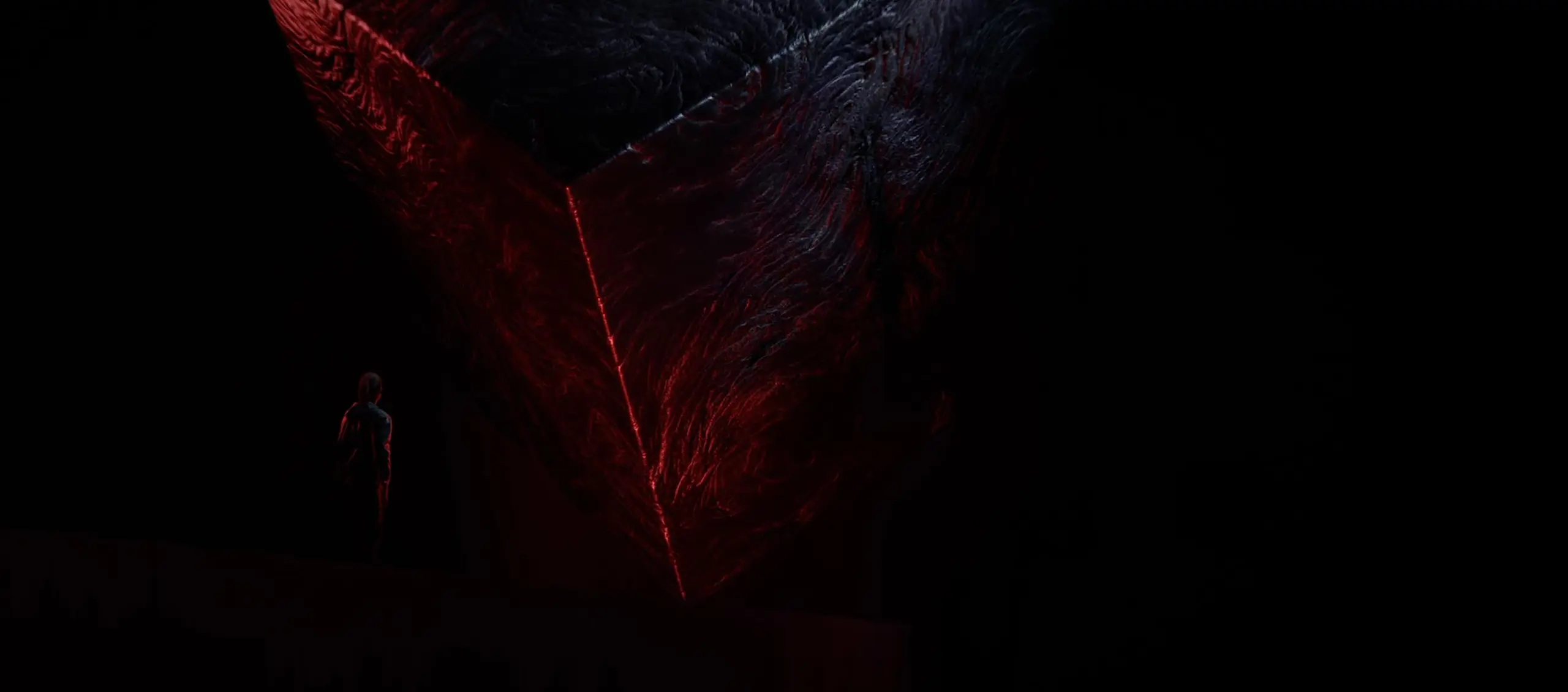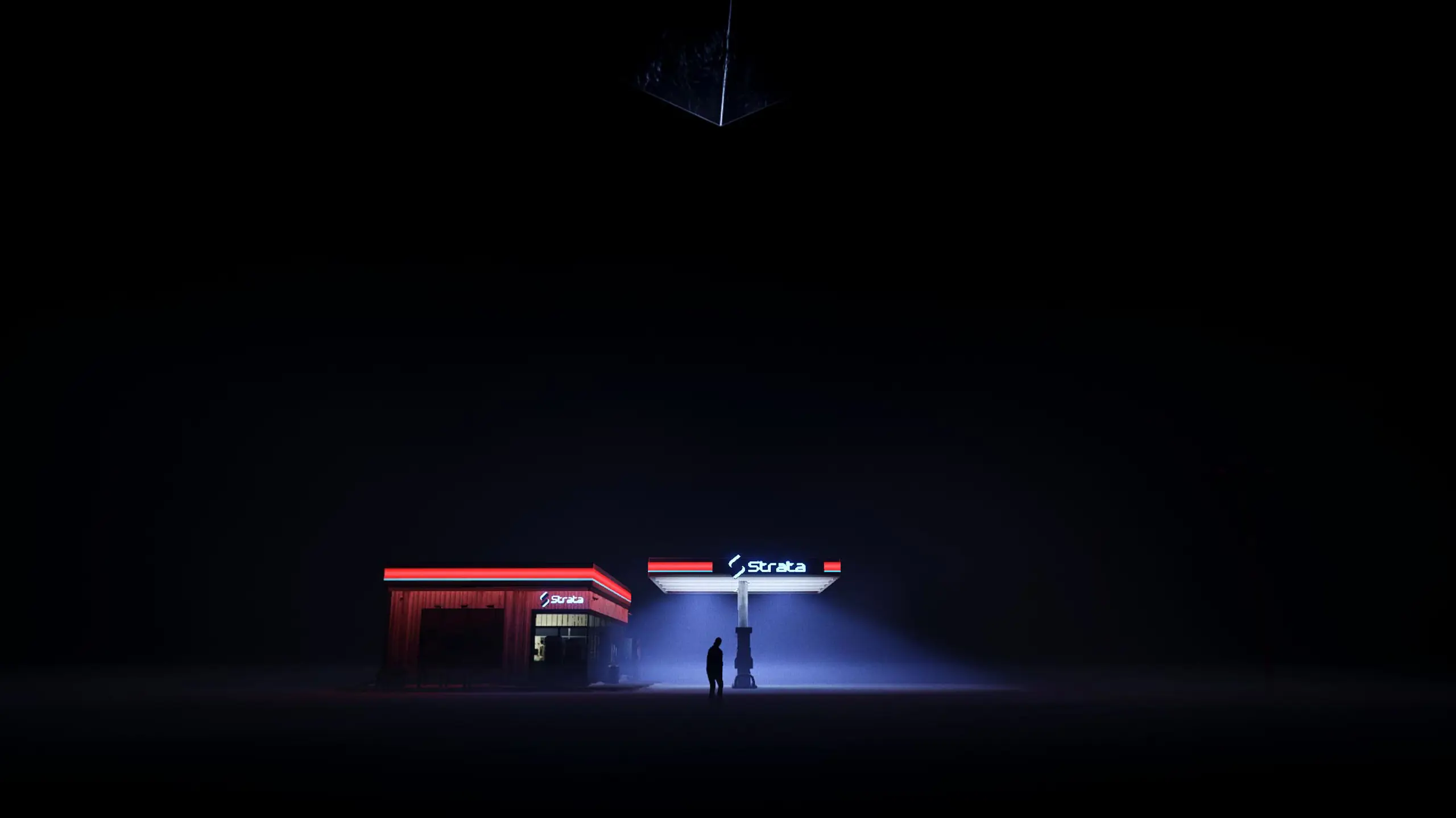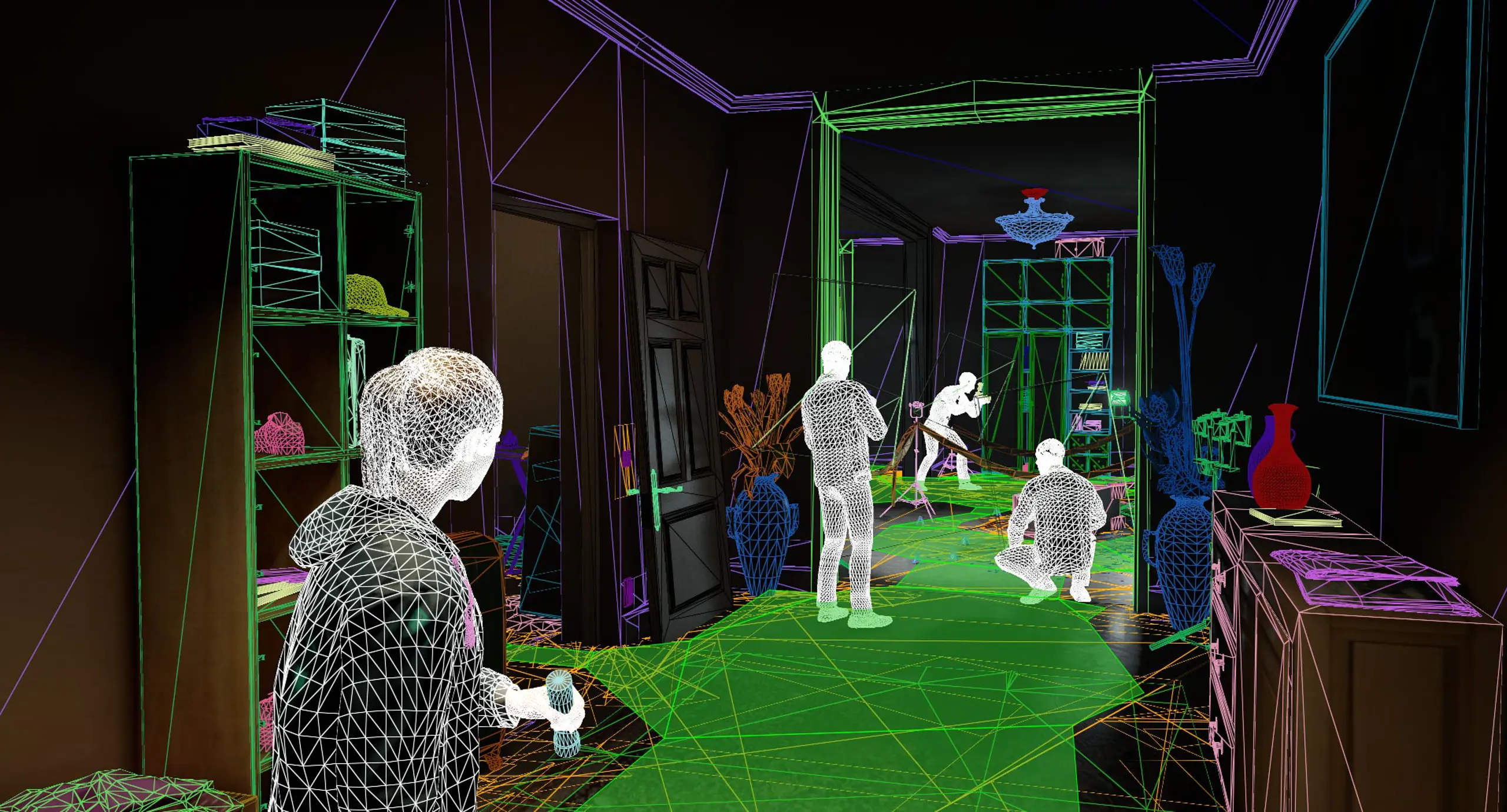
Sound & Cinematics of Miasma
Disclaimer: Miasma was entirely made in Glacier, reusing HITMAN assets. It was made for exploration and learning and is not related to any IOI game projects. Everything was created in 4 days for IOI Week and presented on August 22nd, 2023.
Intro by Ciaran Devlin-Rushe, Lead & Senior Sound Designer
The audio team, comprised of Katrine and myself, saw the project as an ideal opportunity to stretch some surrealistic- and avant-garde sound design muscles.”
Scoring from the always fun, weird, and esoteric side of the sound sourcing world, with singing lemurs, crying rabbits, frying meat, 90s hip hop, bowed metal, and strung springs, all featuring as instruments in the ensemble. We had a loose aim in term of aesthetic to keep the sourced sounds naturalistic and concrete but sculpt and design a set of almost-synthetic, uncanny set of textures and sounds to work from. Any object or surface is a musical instrument when Katrine is around, so we had buckets of content to play with from day one.
IOI Week and the ever-inspiring projects that come with it are always a great chance for us in audio to stress test and experiment with a lot of our technical and creative workflows. Four days is not long for us when starting from a fresh scene, but we benefit immensely from inheriting a lot of the underlying audio systems we work with. With some initial scene markup, a heavily modular set of systems and flexible structures across both G2 and Wwise, allows us to have detailed environment and character sound working with bespoke level setup and design almost immediately. Broken-glass-shard footwear and outfit type is only a content swap away. Runtime iteration and a holistic level implementation are the cherry on top when it comes to testing and turning around ideas as quick as possible.
Team-, cross craft collaboration and communication in creative sprints like this are always the key to our success in sound. Our mentality is the moment we get eyes on concept or design then we can get our ears on audio experience design and implementation, and with the immensely talented team we have around that process is an incredibly fun and creatively rewarding one.
- Ciaran Devlin-Rushe

Soundtrack Identity
Intro by Katrine Amsler, Junior Sound Designer
The majority of the ambience sounds for Miasma were created from recordings I made inside of an abandoned oil tank!”
Inside the big empty tank I found two giant wires attached to the floor and the ceiling of the tank, almost like a huge 2 stringed double bass. The reverb in there was longer than the Eiffel Tower on a cloudless day! On the outside this was just an empty abandoned building, but it turned out it was not empty at all because It was full of sound... and a few dead birds.
I’m glad that I was curious enough to go inside for a closer investigation and not just pass by. After 4 hours of concentrated recording it was nice to get the ears back out in dry air. I’m happy there are no open sends to valhalla in real life. The eternal resonance from the low frequencies from the wires turned out to be a perfect fit for the Miasma environment.
- Katrine Amsler

Cinematics
Intro by Nick Andersen, Cinematic Artist
The primary objective of the intro cinematic was to foreshadow the cube and the changes it would bring during gameplay. It should be abstract and somewhat elusive, leaving players intrigued about what was happening. With interesting concepts for the visuals in mind, I had a clear vision of what I wanted to achieve.
The first step was to block out a rough 3D scene to get the pacing and some general camera ideas in place. Then I went on to texturing the cube and and add animated lights to the scene. Once I was satisfied with the pacing and visual quality, I sent it over to the audio.
Our artistic motivation revolved around clevery designing liminal spaces to instill an unsettling atmosphere. ”
For the in-game cinematics, the first step was setting up the transition in G2 so that gameplay could smoothly move into the cinematic sequences. Once the setup was complete, I created a preliminary version in Motion Builder, establishing key poses that would be imported into the engine. This allowed me to outline the scene, gradually improving it by adjusting the pacing, adding cinematic lighting, camera visual effects, and more.
- Nick Andersen, Cinematic Artist
We're hiring!
Explore our open jobs on our Careers site.








